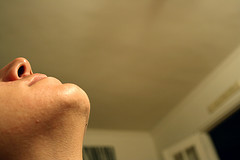The double chin is a commonly suffered affliction in individuals who are overweight or obese. Even when weight loss is successful, the double chin tends to remain. The double chin can also be a natural feature on an individual that has never had any issue with their weight. Many medical professionals have reported clients eager to have a safe and effective cure to their aesthetic dilemma. As a dominating feature that is commonly unwanted, a pharmaceutical company is investing time and research in developing a possible solution. The cure in the works is a series of mini-injections of a drug referred to as ATX-101.

How Does It Work?
ATX-101 is a synthetic formula that includes a component of human bile that already occurs in one’s body for the purpose of breaking down dietary fats. Studies have shown that when the drugs is injected just below the skin in the targeted fat deposit, it is largely reduced and has minimal effects on any surrounding tissue. Specifically, ATX-101 preferentially obliterates adipocytes, or fat cells. The drug is designed to target areas that are weak in protein. Fat is weak in protein while skin, blood vessels and muscles are strong in protein, so the drug will stay away from those vitally important areas.
Will It Hurt?
A beneficial, well-received part of this new series of mini-injections is the fact that it is barely invasive and can be done with no anesthetic. A common response to the clinical trials is likening the procedure to that of getting a tattoo done, as the procedure is similar in regards to the level of pain experienced by the client. The amount of injections that would be required range from 40 to 60 injections, depending on the size of the double chin. The process is estimated to take about 14 to 16 weeks, which makes the time spent receiving results dramatically different from that of getting a tattoo.
When Will It Be Available?
Comments on news articles about ATX-101 have been full of excited prospective clients. Testing of this cosmetic medicine has already been well underway for the past two years, though it could be another few years before it is ready for general use in clinics. Phase III of trials were over one and a half years ago with estimates predicting a release in 2014. ATX-101 has been tested on over 700 people in varying European countries. While 2014 is the projected date for Europe, Asia and Latin America, no dates have been released for the United States.
Citations:
- Photo by Caitlinator
Peter Wendt is an avid researcher and writer living in Austin, Texas. He likes to stay on top of new innovations in the medical community, and recommends this New York dermatology practice for any of your skincare needs.

